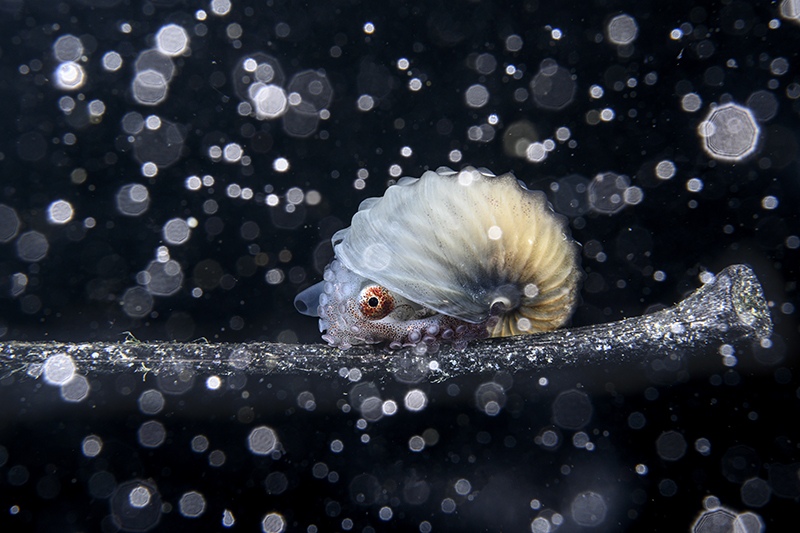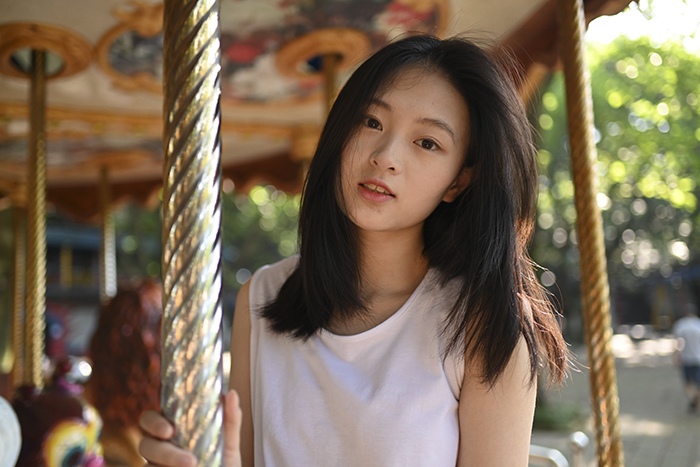
Jialing Cai: A Deep Dive into the World of Marine Biology and Underwater Photography – An Interview with the Ocean Photographer of the Year 2023
In this exclusive interview, we delve into the captivating world of marine biology and underwater photography with Jialing Cai, the esteemed Ocean Photographer of the Year 2023. Jialing, a recent graduate from Columbia University with a master’s degree in Ecology, Evolution, and Environmental Biology, shares her unique journey from academia to the depths of the ocean. Her passion for marine biology and underwater photography not only illustrates a profound connection with the aquatic realm but also highlights the intricate and often overlooked aspects of marine life.
From discussing the unexpected turn of events that led her to pursue a master’s degree, to the thrilling adventures of blackwater photography, this interview sheds light on the intersection of scientific inquiry and artistic expression. Jialing’s journey reflects a deep commitment to exploring and documenting the lesser-known marvels of the ocean, transforming her academic background into a lens through which we can all appreciate the mysterious beauty of marine life.
Join us as we explore the inspiration behind Jialing Cai’s choice of marine biology, the integration of her photography with scientific research, the excitement and challenges of blackwater photography, and the story behind the mesmerizing paper nautilus image that clinched the Ocean Photographer of the Year 2023 title. This interview is not only about the triumphs in capturing the unseen but also about a personal evolution in understanding and appreciating the complex tapestry of life beneath the waves.
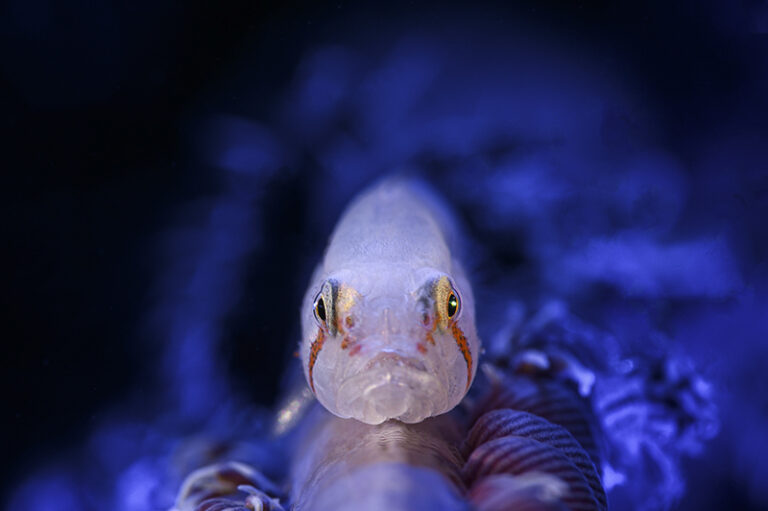
Educational Background: Could you share your academic journey, particularly your decision to pursue a master’s degree in Ecology, Evolution, and Environmental Biology at Columbia University?
A: I completed my master’s degree in Ecology, Evolution, and Environmental Biology (E3B) at Columbia University this May. These two years of graduate study were intellectually satisfying, but initially, my decision to enroll wasn’t driven by academic ambition, but rather as an escape from a reality I wasn’t ready to face.
As an undergraduate, I majored in Biology, focusing on marine science and developing underwater photography as a hobby. Although I enjoyed biology, I lacked the motivation to pursue a traditional biology-related job, such as in a pharmaceutical company. After graduating in 2019, I found myself jobless and reluctant to view this as a failure, still passionate about marine biology. The only clear path seemed to be turning my hobby into a profession.
Confidently (perhaps naively), I envisioned a career as a freelance underwater photographer, considering income streams like selling photo prints, securing sponsors, and conducting workshops. With a plan in place, I turned to my family for support. They, understanding neither biology nor photography, generously funded my initial endeavors, covering camera gear, diving equipment, and travel expenses.
I spent the latter half of 2019 building my social media presence, particularly on Weibo in China, and writing popular science posts about marine animals I encountered. Combining photography with scientific descriptions and personal observations proved effective for science communication, as I gained 50,000 followers in six months. Sponsors and mainstream media began to show interest, and I felt on the brink of a breakthrough when the pandemic struck. Confined at home without access to diving for two years, I faced the fragility of my ambitions and the uncertainty of the future. Unwilling to confront the competitive job market, I saw returning to school as my only refuge.
Despite feeling cowardly at the time, my passion for marine biology remained central to my identity. I chose the E3B program at Columbia University as a detour on my life’s journey. What began as a reluctant compromise transformed into a gratifying experience. In two years, I completed courses in ichthyology, ornithology, mammalogy, herpetology, mineralogy, entomology, and botany. This intellectual journey paralleled life’s evolutionary path.
As a zooplankton photographer often out in the open ocean at night, I found mystery and adventure in the dark depths. However, my studies led me to appreciate the terrestrial world more, from the touch-me-nots in NYC parks to the unnoticed tree on my balcony. The pandemic subsided, I graduated, and resumed underwater photography with a renewed perspective on life’s interconnectedness and diversity. Even on land, I find solace in the natural world’s simpler elements.

Inspiration Behind Marine Biology: What first sparked your interest in marine biology, and how has that passion evolved over the years?
A: For the first 18 years of my life, I had no physical or spiritual connection with the ocean. Growing up in Chongqing, an inland city in China, and with parents who weren’t particularly outdoorsy, my path to becoming an underwater photographer was both random and spontaneous.
During a marine science lecture in college, my professor discussed a phenomenon known as Diel Vertical Migration of Zooplankton. Essentially, zooplankton, a group of tiny animals, migrate from deeper waters to shallower ones at night and return to the depths at dawn. They travel hundreds or even thousands of meters vertically, repeating this migration daily across the open ocean.
This description struck me like lightning.
I realized that to encounter deep-sea creatures, one doesn’t necessarily need to be a deep-sea biologist with access to research facilities, nor do they need to be wealthy enough to afford a commercial trip in a submersible. Learning about vertical migration revealed a simpler method: just waiting at the ocean surface at night for these creatures to come to me. It seemed incredible!
This epiphany became the driving force behind my underwater photography. My goal is to document the zooplankton that rise to the ocean’s surface each night, offering a unique approach to deep-sea exploration. Until I get the chance to venture into the deep sea, I plan to float at the surface, eagerly awaiting these deep-sea visitors, using them as windows to peer into the depths below.
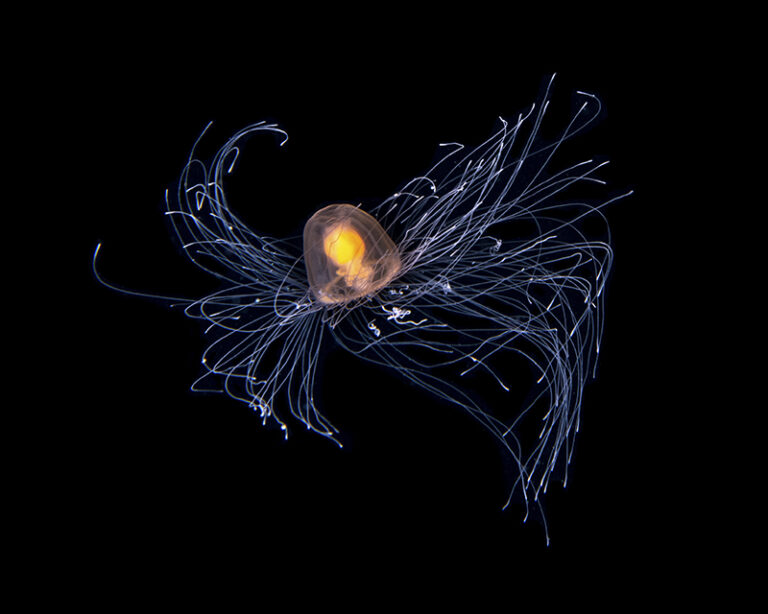
Integrating Underwater Photography and Marine Biology: Could you discuss how your underwater photography skills complement your academic research in marine biology?
A: My master’s thesis research and my photography project are quite distinct; the former focuses on microscopic plants in the bottom layer of sea ice, while the latter concentrates on planktonic animals. Yet, my training in marine biology has been invaluable, allowing me to perceive these animals beyond their superficial morphology and behaviors, delving into their evolutionary history. In the classroom, these creatures are no longer mere subjects for study but become living beings with an aesthetic appeal.
Conversely, during diving expeditions, I don’t just observe living animals; I’m witnessing a vast, hidden narrative of nature. My academic background in marine biology and my skills in photography enrich and propel each other, intertwining like the strands of a DNA double helix.
The Fascination of Blackwater Photography: What are the challenges and excitements you face in blackwater photography, and how does it offer unique perspectives on marine life?
A: My fascination with zooplankton extends beyond their deep-sea connections. Many marine animals, across various taxonomic groups, have a planktonic stage in their development, often involving vertical migration before settling into adult habitats. Therefore, regardless of their final living environment—be it coral reefs, deep seafloor, or intertidal zones—they share a common early life stage in the open ocean as marine larvae. This fact makes blackwater diving akin to exploring the ocean’s vast nursery. For example, encountering a juvenile ribbonfish, which typically resides below 1000 meters, at a mere 5-meter depth, was astounding. Even familiar marine animals have life cycle aspects shrouded in mystery. Many undergo dramatic metamorphoses, with larval forms vastly different from their adult versions, sometimes appearing as entirely new species. Blackwater photography has not only deepened my connection with the sea but also enabled me to personally observe and understand the complex life cycles of marine species.
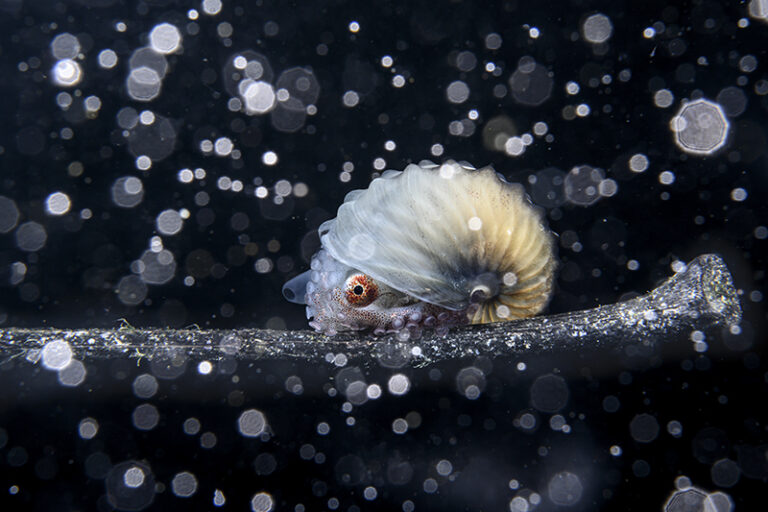
Capturing the Paper Nautilus – Ocean Photographer of the Year 2023: Could you tell us about the story behind your award-winning photo of the paper nautilus, which garnered you the Ocean Photographer of the Year 2023 title?
A: This photograph, which won me the Ocean Photographer of the Year 2023, was taken during a blackwater dive shortly after the Taal Volcano eruption in the Philippines in early 2020. I encountered a female paper nautilus, a species belonging to the Argonauta genus of octopuses, known for living in the open ocean. The female paper nautilus is particularly notable for evolving a shell to lay eggs in. She was hitchhiking on a piece of floating wood debris amidst the turbid waters. As I took the picture, the particles in the water reflected my flashlight, creating an enchanting effect reminiscent of falling snow. In blackwater photography, we usually position the strobes to highlight the subject against a clean, dark background. But, in this instance, my strobes unintentionally illuminated the space between the camera and the subject, revealing all the particles around her. Instead of depicting the chaos following a natural disaster, these particles added a serene, almost fairytale-like quality to the image, as if set on a snowy night.
In underwater photography, especially blackwater photography, we often seek crystal clear waters that resemble the emptiness of outer space. We tend to overlook the significance of suspended particles, such as sand grains, organic matter, and microscopic organisms, which are crucial components of the marine ecosystem. These particles usually go unnoticed or are edited out, but they are fundamental to the marine food web. If the ocean were entirely transparent, it wouldn’t be able to support such a rich diversity of life. The “snowflakes” in this image serve as a reminder of these often-overlooked yet vital elements of the ocean.
Influences in Your Acclaimed Work: Your achievement as Ocean Photographer of the Year 2023, particularly your stunning paper nautilus image, is impressive. Can you share how diel vertical migration played a role in this specific work?
A: The paper nautilus featured in my image is an active swimmer in the open ocean, unlike plankton, which are subject to currents. It’s a typical predator, feeding on small planktonic animals. During daylight, these tiny plankton retreat to the depths to evade visual predators like fish and paper nautiluses. However, at night, the scene changes dramatically. Under the cloak of darkness, plankton migrate en masse to the surface, transforming it into a lively hunting zone. Here, paper nautiluses and other predators scour the waters, making it an ideal time and place for observation and photography. This nocturnal activity was likely why I could capture this particular paper nautilus.
Following the volcanic eruption, the water turned exceptionally murky, teeming with suspended particles. In underwater photography, such particles often cause backscatter, an effect usually avoided as it can clutter the image and detract from its aesthetic. However, instead of trying to eliminate the backscatter, I embraced it in my composition. I aimed to use the backscatter to highlight the omnipresence of sand grains, organic particles, and other small organisms in the water, contributing to the overall narrative and depth of the photograph.
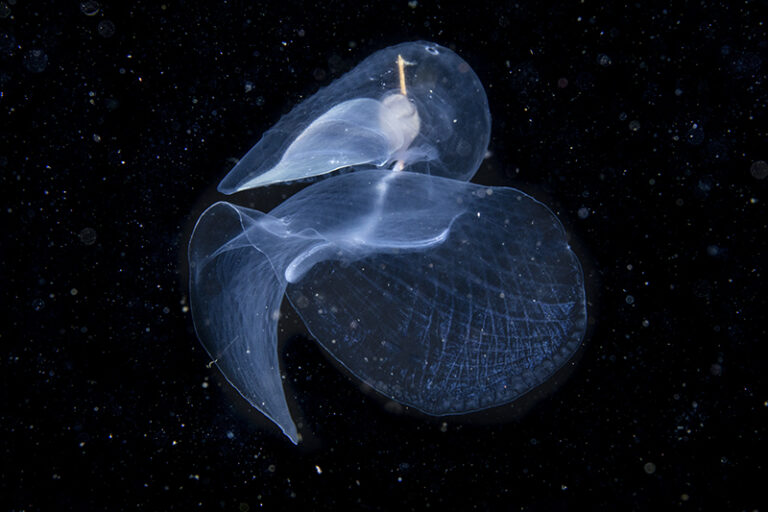
Frequency of Dives: How frequently do you embark on diving expeditions for your photography?
A: Since graduating this May, I now try to dive every two months, with each trip lasting about two weeks. However, for much of my career, I was a student limited to diving only during winter and summer breaks, so I used to dive just twice a year.
Location of Dives: What are your preferred locations for underwater photography, and how do these environments impact your work?
A: In theory, the location for blackwater diving isn’t crucial, as zooplankton migrate to the ocean’s surface every night globally. However, practical considerations like the availability of dive shops equipped to transport divers to the open ocean, the setup of proper lighting to prevent divers from getting lost, and local regulations permitting blackwater diving due to its risks, do play a role in choosing a dive location.
My preferred spot for blackwater diving is Anilao in the Philippines, where I’ve captured 90% of my photographs. The coastal waters of Anilao have a unique underwater topography, allowing quick access to deep waters close to the shore. By ‘deep’, I mean hundreds to thousands of meters. The area is also relatively calm in terms of currents, making it a safe and stable environment for diving. But my frequent visits to Anilao are primarily due to a particular dive shop, Anilao Photo Academy, well-known among blackwater photographers. This place was pivotal in my journey, offering a community of professional underwater photographers. I learned everything from camera basics to advanced underwater lighting techniques there. The dive guides are exceptionally knowledgeable, and I consider the Academy the cradle of my underwater photography career. It holds a special place for me, almost like a second home.
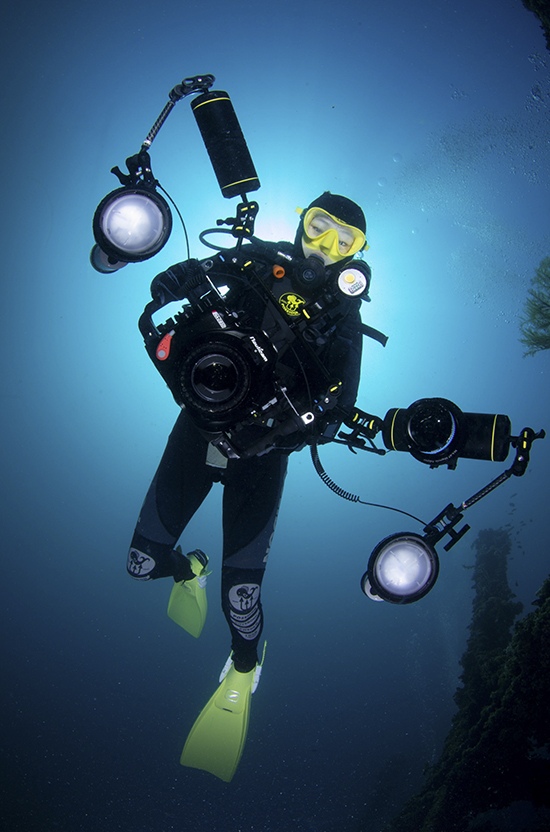
The “Homoplankton” Project (https://www.homoplankton.com/): Could you elaborate on your ‘Homoplankton’ project and its goal of raising awareness about lesser-known marine species?
A: In marine science, ‘phytoplankton’ refers to drifting algae, and ‘zooplankton’ to drifting animals. When I, a Homo sapiens, float 20 meters beneath the ocean’s surface, I jokingly refer to myself as a ‘Homoplankton’ (a term I coined). The ‘Homoplankton’ photography project aims to document these tiny drifters. While sharks, dolphins, whales, and jellyfish are well-known and often featured in movies and encyclopedias, many are unfamiliar with siphonophores, salps, and pteropods. This project’s objective is to showcase the beauty and elegance of these under-appreciated species without pushing for specific actions. I believe that fostering a sense of biophilia and respect for nature through projects that blend biology, ecology, and art is key to engaging the public in conservation. This approach might not immediately impact policy-making or resource management, but it nurtures a sense of awe and wonder for nature in future conservationists.
Vision for the Future: As a successful young marine biologist and photographer, what are your aspirations for your research and photography in the future?
A: My drive to explore the oceans stems from the belief that life originated in alkaline hydrothermal vents, a well-supported hypothesis in the scientific community. If I may be ambitious, one of my life’s ultimate goals is to visit these hydrothermal vents, realms separated from me by both thousands of meters and billions of years. The most realistic path to achieve this is by joining a research lab focusing on deep-sea hydrothermal vents, either as an ecologist or an evolutionary biologist.
Until then, I will continue to explore the deep sea through blackwater photography. My journey of discovery is endless. I plan to venture to temperate or colder dive sites next. Having spent the last five years documenting species in the Philippines, I’ve become accustomed to warm waters. Now, it’s time to step out of my comfort zone and seek exotic animals in different parts of the world. This shift promises not just a geographical change but also an exploration into unique ecosystems, challenging me to adapt and expand my understanding of the fascinating marine life that exists beyond the familiar territories I know so well.
Jialing Cai’s goals in marine biology and underwater photography showcase her profound dedication to unveiling the mysteries of the ocean’s depths. Her ambitious plans signal a journey that extends beyond geographical boundaries, promising a richer comprehension of the complex marine ecosystems beyond well-known regions. As this interview comes to a close, we are left marveling at Jialing’s unwavering quest for knowledge and her exceptional skill in capturing the visual essence of the aquatic realm. We look forward with great anticipation to her future explorations and the remarkable contributions she will undoubtedly make to the fields of marine biology and photography.
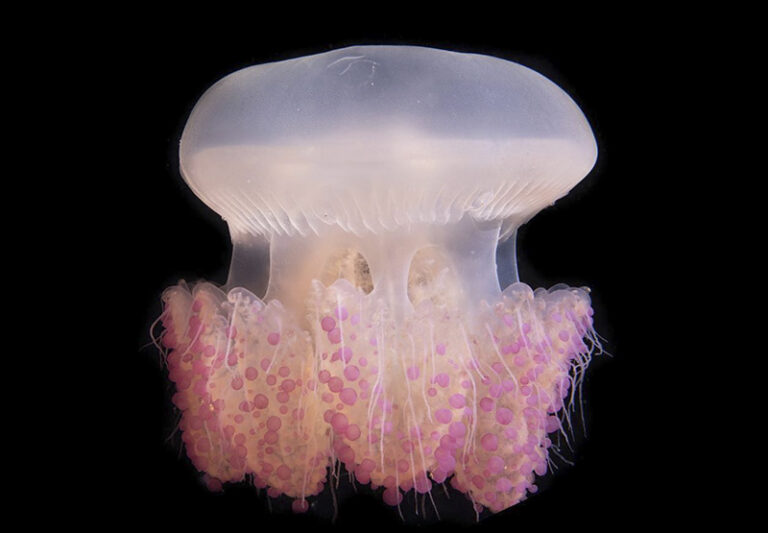
Jialing Cai’s goals in marine biology and underwater photography showcase her profound dedication to unveiling the mysteries of the ocean’s depths. Her ambitious plans signal a journey that extends beyond geographical boundaries, promising a richer comprehension of the complex marine ecosystems beyond well-known regions. As this interview comes to a close, we are left marveling at Jialing’s unwavering quest for knowledge and her exceptional skill in capturing the visual essence of the aquatic realm. We look forward with great anticipation to her future explorations and the remarkable contributions she will undoubtedly make to the fields of marine biology and photography.
